Aratinga: characteristics, types, rules of care
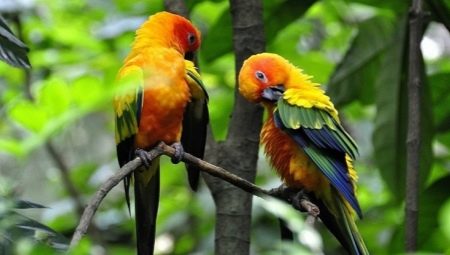
Aratinga is an amazingly beautiful genus of parrots. These creatures are often called "flying flowers" because their plumage is so bright and colorful that they really look like exotic flowers. Aratings often become pets, their presence gives positive emotions and pleasant impressions.
Perhaps this particular bird will appeal to you. To find out, it is necessary to study in detail the representatives of this species.
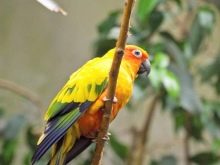

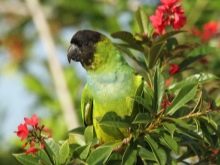
Description
The parakeet is loved by both adults and children. He becomes a friend, not just a pet. These birds have a number of features that make them so popular around the world.
- Cheerful, friendly character combined with sweet arrogance. These birds are distinguished by gullibility and devotion, they love to make contact with people and become attached to them.
- All representatives of this species talk and are characterized by loudness. The parrot is good at imitating sounds, including music. With a small vocabulary, these birds are able to replace old words with new ones that they like best.
- The aratings communicate with each other by cooing, they talk quietly to each other and look very cute.
- Aratings are active, love to play, therefore, it is desirable to have a lot of toys in the cage. It can be bells, ladders, chains, swing.
- The body length of these parrots varies from 16-42 cm - depends on the variety. Weight starts from 100 grams and does not exceed 130. The beak is powerful and large, the tail is wedge-shaped.
- It is difficult to determine the sex of the bird by external signs., even not every experienced person will be able to do it.
- These birds love to fly and sit high, moreover, it is vital for them.
- Aratings are friendly so you can have a couple. But in this case, the birds will be more noisy and noisy. This feature should be taken into account when buying.
- Among these birds there are left-handers and right-handers. You can watch the bird to determine its strong foot.
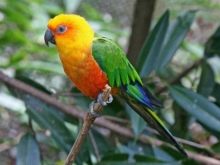
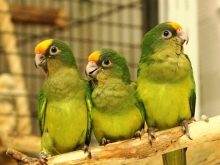
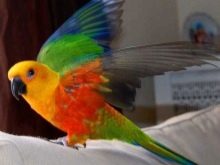
Varieties
The genus Aratinga consists of 24 subspecies. Their representatives differ in plumage and size. We will look at the most common varieties of these amazing birds.
Sunny
It is the most common subspecies and is loved by many poultry houses. These parrots attract attention with very bright and colorful plumage, which combines different shades. Young sun aratins are more greenish.
There are orange inserts around the eyes, just above the beak and on the breast. When the parrot becomes an adult, the feathers on the head, neck, breast, legs, belly and tail are colored yellow and orange. On the wings and tail, the bottom coverts turn green.
In this subspecies, you can find representatives with bright yellow plumage and a red spot on the head.

Orange-fronted
It features green plumage with a yellowish belly and a combination of orange and blue on the head. On the tail, in the area of the lower feathers, there is an olive yellow tint. In natural habitat, orange-fronted aratins prefer marshland with open relief. These parrots are relatively quiet, only when excited do they become noisy and noisy.
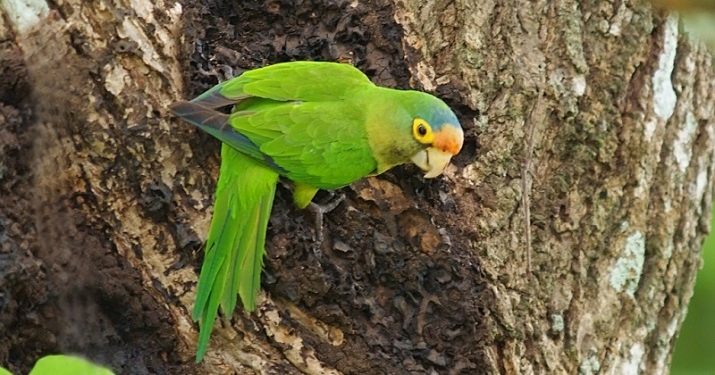
Golden-fronted
Parrots have rich green plumage. On the cheeks, neck and belly, feathers are colored brown with an olive tint... The plumage on the tail has a beautiful olive green color, which is effectively combined with blue feathers.
In natural conditions, they prefer to live in pairs or flocks of no more than 10 individuals. When flying, parrots emit a high-pitched squeal. They choose forest edges for life, they also settle in parks and gardens.
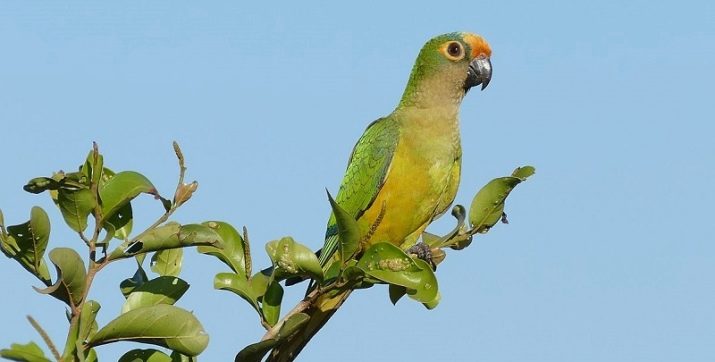
Dark-headed
Aratinga reaches 28 cm in length. The main color of plumage is green, there is a yellow tint on the belly, blue on the tail feathers, and the head is colored grayish-brown. These birds cannot be called noisy.
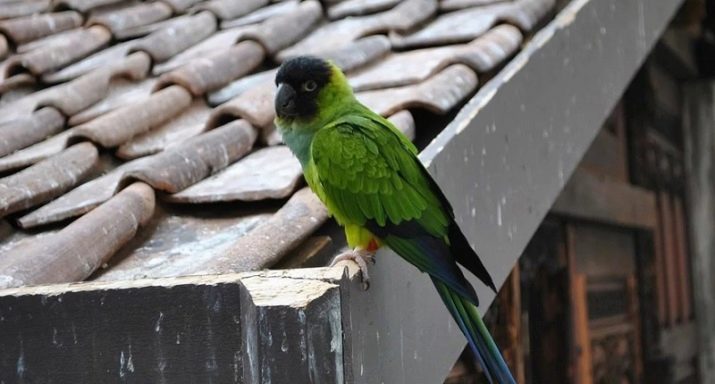
White-eyed
Parrots are also colored green. There are red inserts on the wings and neck, which beautifully set off the main color of the plumage and make the color of these parrots expressive and spectacular. Body dimensions reach an average of 32 cm.
White-eyed aratings live in pairs or flocks. The congregation of these parrots can be 200 individuals. They are nomads. Birds are shy and take a long time to tame.
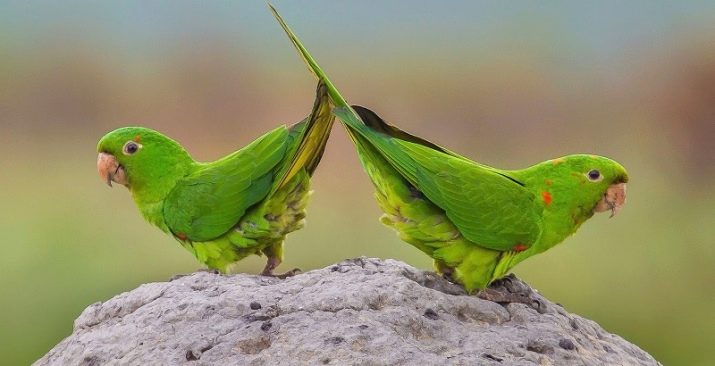
Red-faced
Parrots of this species have green plumage, red inserts are present on the wings, head, cheeks and around the eyes. Body length reaches 33 cm on average. In natural conditions, they prefer to live in flocks. These birds are noisy and noticeable, prefer to live in forests, and are nomads.
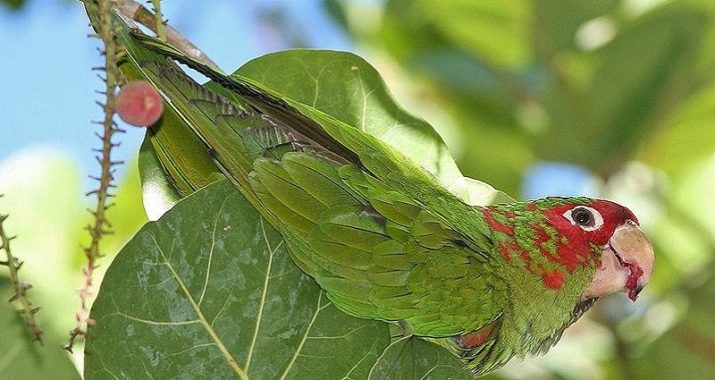
Gold
The aratinga is distinguished by its yellow plumage, which is set off by green feathers on the wings and tail. The body reaches 34 cm in length. Parrots prefer to live in forests, near water, inhabiting the tops of trees. The cry of parrots is so piercing and loud that it can be heard from afar.

Nandai
Parrots from the Nandai subspecies are distinguished by a combination of green and brown colors in plumage. Because of this type, these birds are often called black-headed birds. The feathers on the legs are colored red from below, and from above they have a green tint.
The uppertail is distinguished by green feathers with blue edges. Such parrots live well in captivity.

The diet
Aratings, despite their exoticism, are picky about food. Nevertheless, the diet of these birds should be complete, balanced and varied. When choosing a diet, you must adhere to the following rules:
- the basis of nutrition for parrots should be seeds, nuts, seeds, vegetables, fruits and berries;
- birds eat ready-made feed in the form of granules well, especially if they are multi-colored, because aratins are curious;
- periodically, fresh branches of fruit trees should appear in the cage, in this case, the likelihood of damage to furniture in the house is reduced;
- food for parrots may include boiled eggs: chicken, quail;
- sprouted legumes are a delicacy for overseas birds;
- occasionally you can give bread saturated with fruit juice;
- Broccoli is a source of vitamin K, the lack of which leads to serious health problems;
- it is absolutely impossible to feed the feathered avocado, chocolate and vegetable oils;
- salt should not be included in the diet of parrots.
Leftover food should not remain in the cage; all leftovers should be removed. The water must be constantly changed so that the bird always has access to fresh water. In addition, parrots love to throw food into the water, making them both unusable.
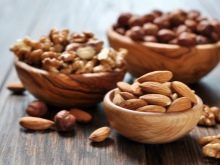

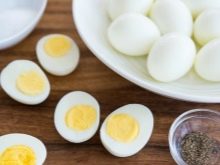
Features of maintenance and care
Overseas birds do not require complex home care. But still, some rules will need to be followed, so that the bird is healthy and live a long, happy life.
- The cage should be spacious, the minimum dimensions are within 50x50x90 cm. In such a cage, the bird will be fine, it will be able to freely spread its wings without affecting the walls. The wooden cage will be chewed off in a short time, so it is better to choose the option with steel rods.
- It is necessary to place toys in the cage, perches and shells so that the parrot can climb and actively spend time. One perch should be near food and water, and the other should be hung higher.
- Arata need an artificial nest to sleep.
- Bathing - a mandatory procedure for birds. In natural conditions, parrots shake off dew, in this way they take water procedures. At home, you can fill a small container with water, put a swimsuit in the cage, or spray the bird with warm liquid from a spray bottle. Such water procedures will allow the parrot to maintain plumage in proper condition.
- It is periodically required to trim the bird's claws. To grind the beak, a wooden stick is placed in the cage.
- Exotic birds cannot tolerate low air temperatures. The ideal conditions for their maintenance are temperatures in the range of 22-25 degrees above zero and humidity from 60 to 70%.
- You should not put the cage with arating next to household appliances. These parrots can mimic the sounds of a working technique well, which in the future can lead to funny but annoying pranks.
- Aratings are curious fidgets, who must be constantly busy with something. Otherwise, their energy can be directed towards destroying your home.
- Of course, the cage should be regularly cleaned and washed, after all, all the aratings are clean and cannot live in a dirty house.

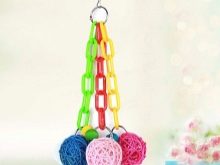

Reproduction
In nature, the formed pair, ready for breeding, leaves the flock. These birds cannot be called monogamous, but the couple usually live together for several years.... Feathered lovers are looking for a ready-made hollow or gouge it out on their own, since the powerful beaks allow you to do this without problems. One clutch can contain up to 5 eggs, which are not laid immediately, but with an interval of several days.
Clutch incubation lasts on average 25 days. The father of the future family all this time is engaged in protecting the house and taking care of the food for his soul mate. Chicks rarely appear from the first clutch, but exceptions are still found. Chicks are ready to leave the nest in 8 weeks.
At home, aratians can also reproduce, although not as readily as in their natural environment. To do this, the cage must have a house with a nest and a tap hole about 9 cm in diameter.
Wood dust or sawdust works well as bedding.
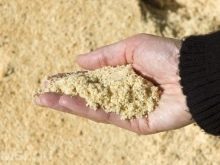
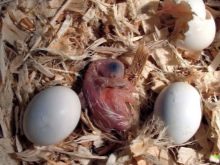
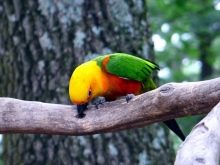
In the next video, you will experience a breeder's impressions of a year of life with the sun arata.








